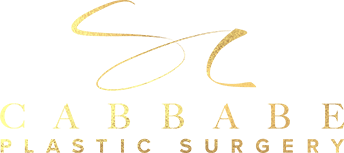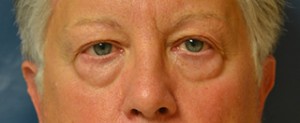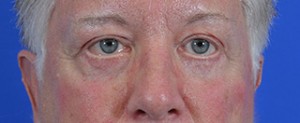Lower Blepharoplasty
Conveniently located to serve St. Louis, Missouri
Jump To:
 As we age, the thin eyelid skin under our eye descends down and elongates the lower eyelid due to the effects of gravity. This same gravity affects the cheek and causes “jowl” formation. As a result, the eyelid skin which is usually over the cheekbone descends below the cheekbone, causing dark circles and giving a tired appearance. Furthermore, the deep structures under the eyelid can weaken, causing bulging of fat and the appearance of “bags” or swelling under the eye and the “tear trough” deformity. Fortunately, there are options to improve this.
As we age, the thin eyelid skin under our eye descends down and elongates the lower eyelid due to the effects of gravity. This same gravity affects the cheek and causes “jowl” formation. As a result, the eyelid skin which is usually over the cheekbone descends below the cheekbone, causing dark circles and giving a tired appearance. Furthermore, the deep structures under the eyelid can weaken, causing bulging of fat and the appearance of “bags” or swelling under the eye and the “tear trough” deformity. Fortunately, there are options to improve this.
Dr. Cabbabe prefers to avoid removing fat from the lower eyelid. He sees many patients who have had fat removed from their upper and lower eyelids and have a “cadaveric appearance” or “hollowed out” look. Dr. Cabbabe believes in fat preservation in the face and that the underlying problem is one of repositioning the fat rather than removing it. In the case of the lower lid, rather than remove fat, Dr. Cabbabe prefers to tighten the deep structures which are weak or release the bulging fat in order to improve the contour of the lower eyelid. Occasionally, fat grafting is also recommended to rejuvenate and restore fullness to the lid – cheek junction.
Dr. Cabbabe often recommends a “support procedure” in conjunction with the lower blepharoplasty in order to reduce the complications associated with scarring in the lower lid from the surgery, such as lower eyelid malposition or ectropion. This can include a canthopexy (tightening of the lower eyelid to the orbital rim), canthoplasty (reconstructing and raising the lower eyelid to the orbital rim) or a cheek/face lift and often enhances the final result. Dr. Cabbabe has published on this topic and found a high complication rate without these additional procedures. This is due to the fact that the lower eyelid becomes inelastic as we age and if it is not tightened, can be pulled down by scar tissue. Since the cheek pulls the eyelid down, raising the cheek to support the eyelid is critical.
Dr. Cabbabe incorporates his experience with reconstructive and cosmetic surgery of the face to give patients the best results possible to meet their desires. He is also an expert in minimally invasive cosmetic surgery of the face and has published on these topics. His patients have a natural, refreshed look after surgery.
During your consultation, Dr. Cabbabe will carefully examine your entire face including the brow, upper and lower eyelids, face and neck. He will make recommendations in order to help you achieve your desired result while maintaining facial harmony. Dr. Cabbabe believes that the entire face should be in harmony and may recommend other procedures such as face lift, brow lift, upper blepharoplasty or neck lift to be done at the same time.
Traditional Lower Blepharoplasty
In this procedure, an incision is made below the eyelid margin (sometimes the incision is made inside the lower eyelid). Extra skin is often removed. The lower eyelid septum is tightened or released in order to decrease fat bulging below it. In certain patients with very lax skin, the muscle under the eyelid may be tightened (canthopexy) or reconstructed (canthoplasty) to prevent scarring in the lower eyelid which may retract the skin down and cause dry eyes from the inability to fully close the eye.
Dr. Cabbabe is an expert in this area and has published on this topic in the prestigious Journal of Plastic and Reconstructive Surgery:
Cabbabe S, Andrades P, Vasconez LO, “Lateral orbicularis oculi muscle plasty in conjunction with midface lifting for periorbital rejuvenation”, Plastic and Reconstructive Surgery, October 2009:124(4):1285-93
While studying this topic, Dr. Cabbabe found that the overall complication rate for lower eyelid surgery may approach 50%, particularly in the cases where the cheek has descended considerably. He found that supporting the lower eyelid by raising the cheek (“midface/cheek lift or face lift”) decreased the complication rate substantially. As a result, Dr. Cabbabe may recommend a midface/cheek lift in addition to your lower eyelid surgery in order to decrease the risk of complications as well as improve the aesthetic result.
Transconjunctival Lower Blepharoplasty
This operation is similar to traditional lower blepharoplasty with the exception that the incision is made inside the inner aspect of the lower eyelid as opposed to the outer aspect, or skin side, of the lower eyelid. This may be an option in select patients when there is no excess skin to be removed from the lower eyelid. This may offer a lower risk of lower eyelid ectropion (pulling down).
Lower Blepharoplasty for Patients Undergoing Face–Lift
If you are undergoing a face-lift procedure, Dr. Cabbabe may be able to address the lower eyelids through the same incision used for the face-lift. In this manner, scars are avoided on the lower lid as well as the associated complications. The muscles and septum below the eye are tightened in order to improve the appearance of the lid. The cheek is elevated as part of the face-lift. Some patients with a significant amount of redundant skin on the lower lid may require removal of skin through an incision below the eyelid.
Fat Transfer to the Lower Eyelids
Dr. Cabbabe may recommend fat transfer to the lower eyelid as a stand – alone or as an adjunct to rejuvenate and refresh the lower eyelid. This procedure involves removing fat from an unwanted area of the body, preparing the fat for re-injection by purifying it and then carefully injecting it in the appropriate area. Commonly, the fat is placed into the cheek-lower eyelid junction to “fill” the cheek, elevate the cheek, blunt the lower eyelid – cheek junction and shorten the lower eyelid.
Preparing for Surgery
Dr. Cabbabe will ask that you refrain from taking any aspirin, Plavix, Coumadin, ibuprofen or any other type of blood thinner. He will also ensure that your blood pressure has been properly controlled if you have high blood pressure. On the morning of surgery, Dr. Cabbabe will precisely mark the planned incision lines.
Before & After Gallery
View before-and-after pictures of real patients of Cabbabe Plastic Surgery
Surgery
The procedure takes about 2 hours total. This procedure can be done under local anesthesia, local anesthesia with sedation or general anesthesia. The deep structures in the lower eyelid are tightened or released, allowing the fat to “re-drape”. Conservative skin removal is done. The muscle in the lower eyelid will be tightened, raised or repaired as needed. The cheek is elevated by means of a face lift if needed or desired. Fine sutures will be used and will need to be removed 5-7 days after the procedure.
Your Lower Blepharoplasty will be performed in a hospital or surgery center in St. Louis, MO.
Recovery
Patients are able to go home after surgery. Pain medication will be prescribed. Bruising and swelling will be present around the eyes for 1-2 weeks. Dr. Cabbabe will ask that you keep ice on the area to decrease this. He will also ask you to keep your head elevated to decrease swelling and apply antibiotic ointment to the incision line. Patients are asked to apply moisturizing eye drops after surgery. Patients are able to shower the next day. Sutures will be removed in 5 – 7 days.
Complications
Possible complications after lower eyelid surgery include asymmetries, residual excess skin, irritation of the eye, inability to fully close the eye for a period of time, inflammation and excess tearing. Lower eyelid malposition may occur or ectropion (severe lowering of the eyelid). These could potentially require additional surgery. Injuries to the eye itself are rare but possible. Fat embolism is possible if fat is utilized.


